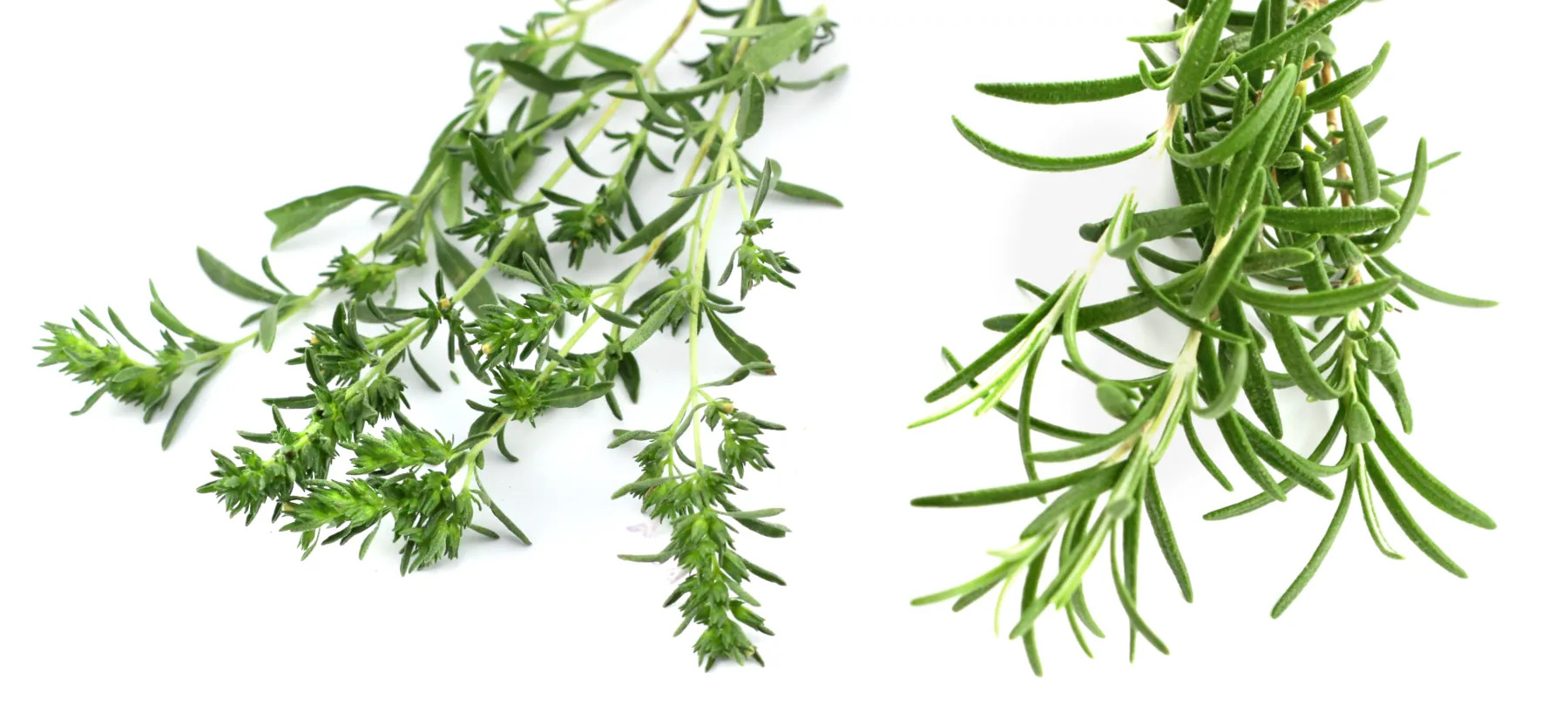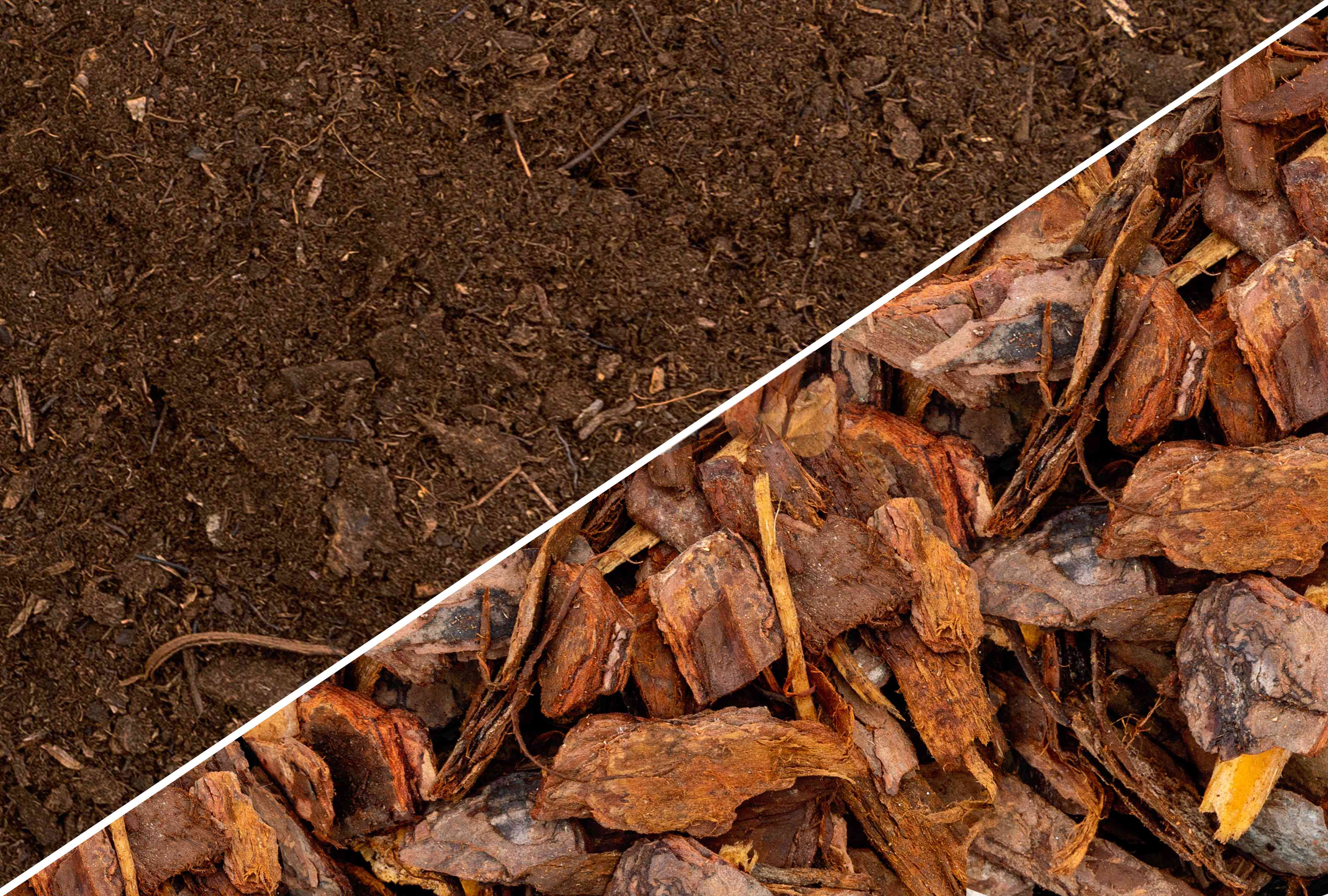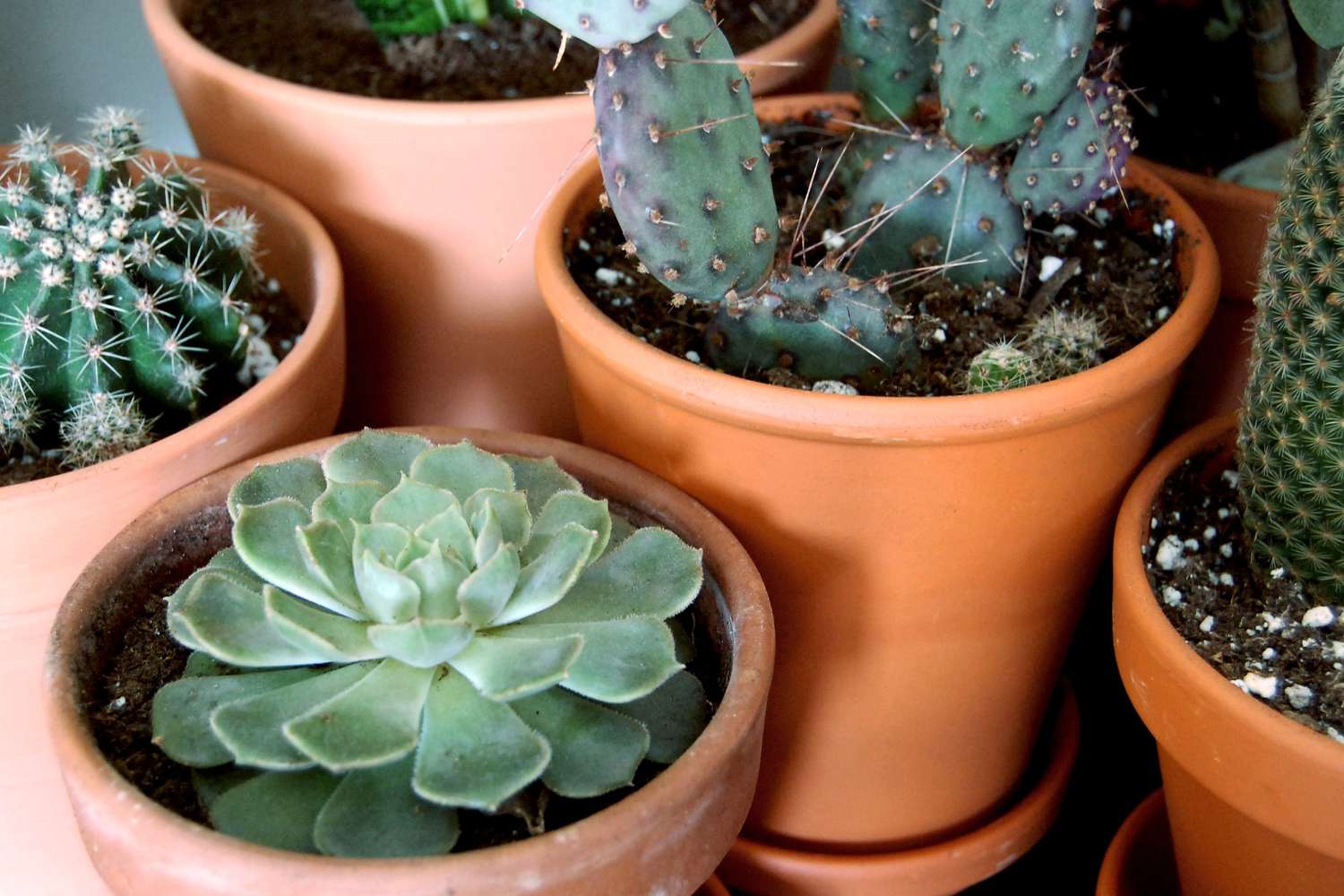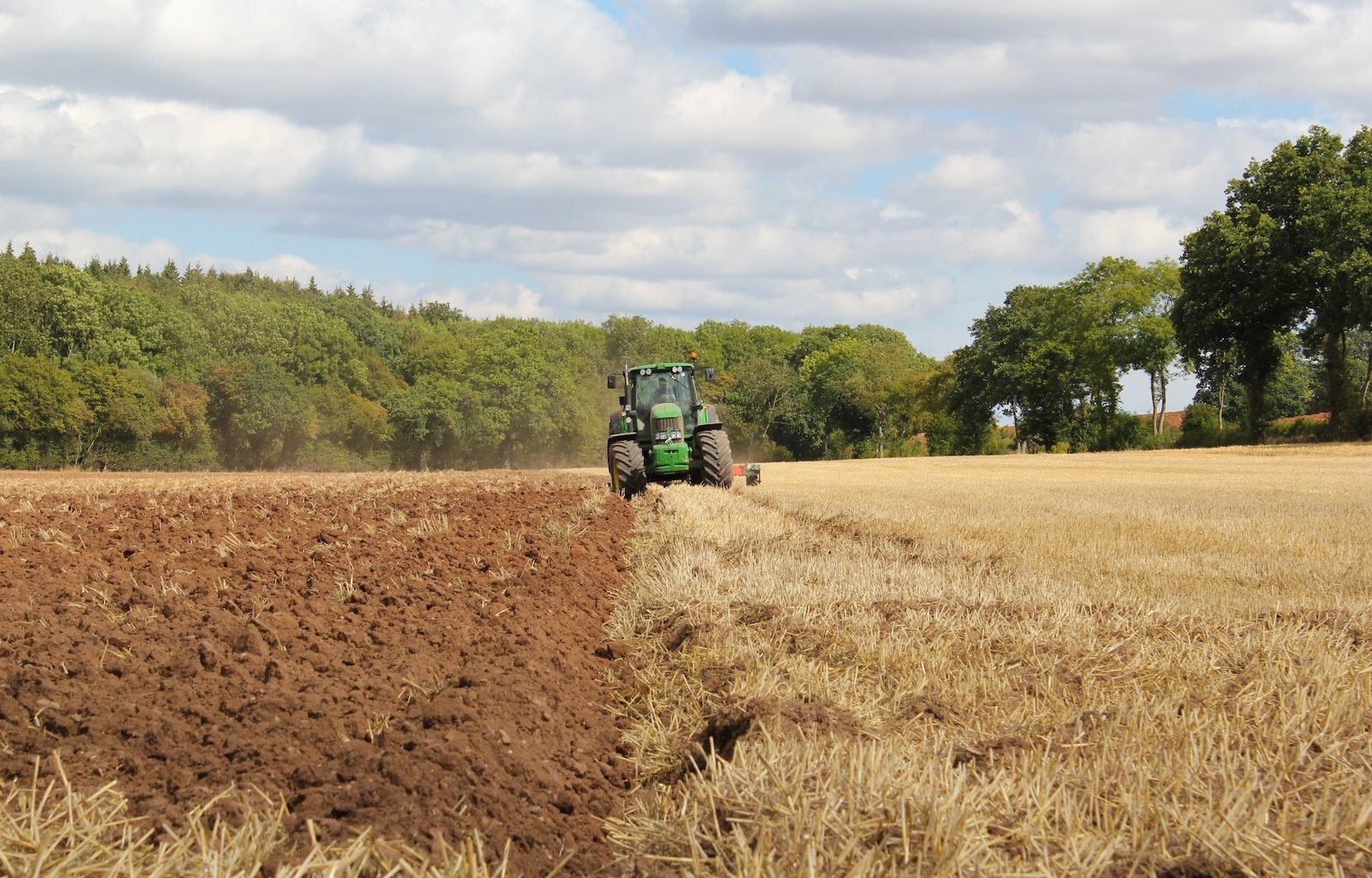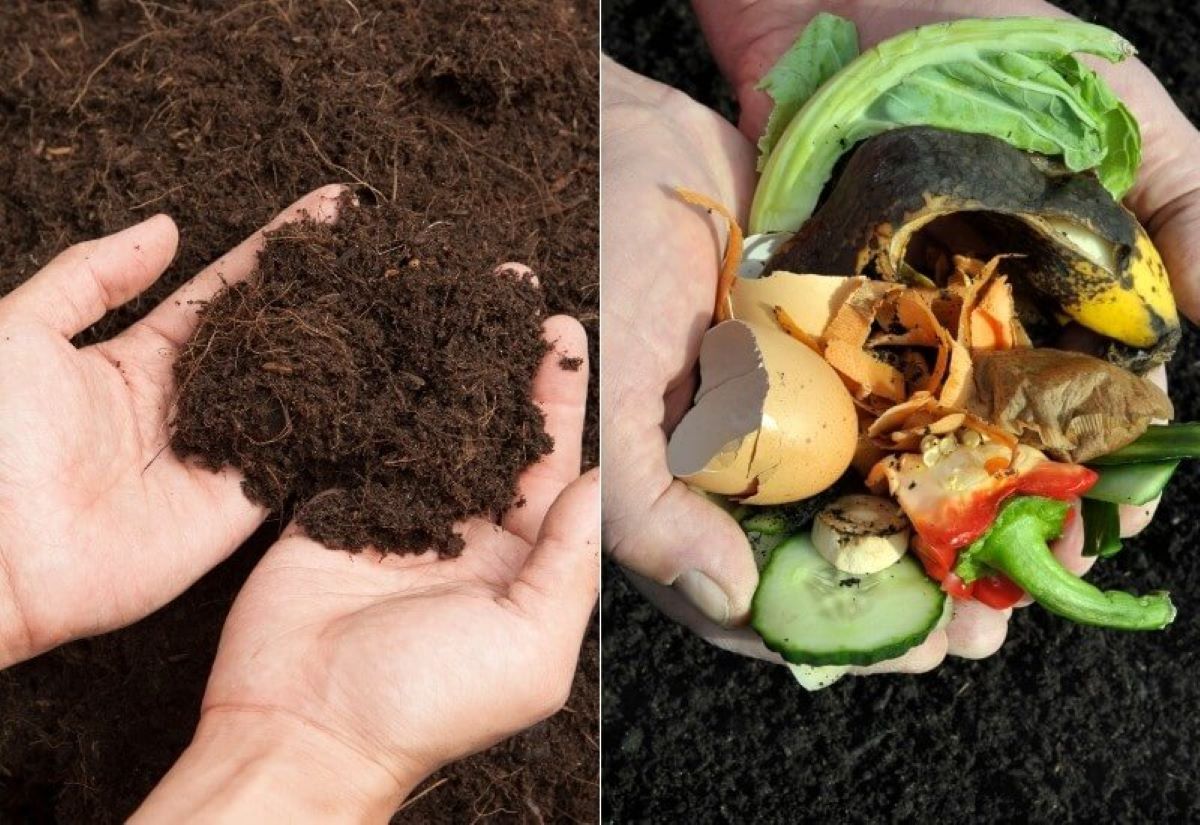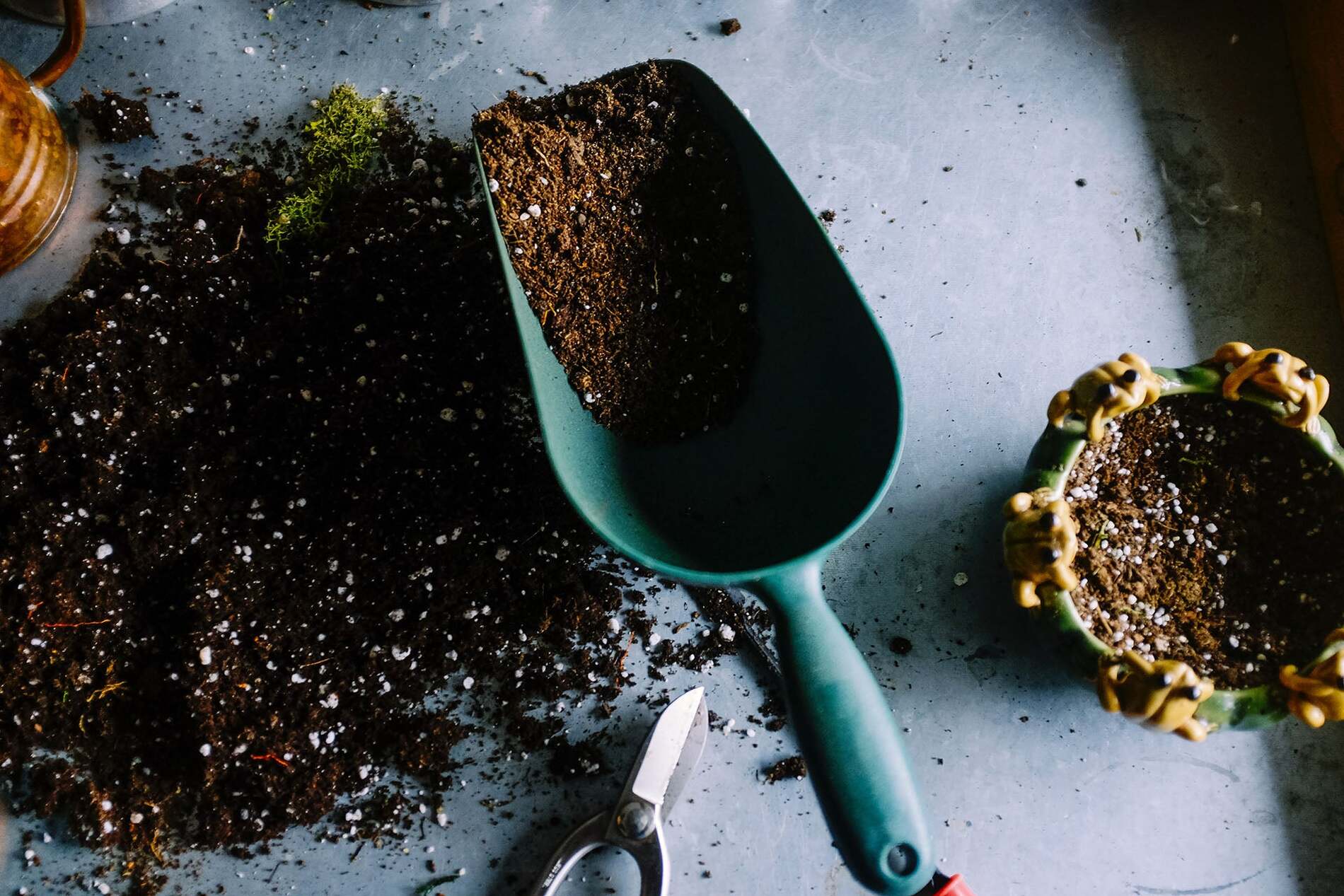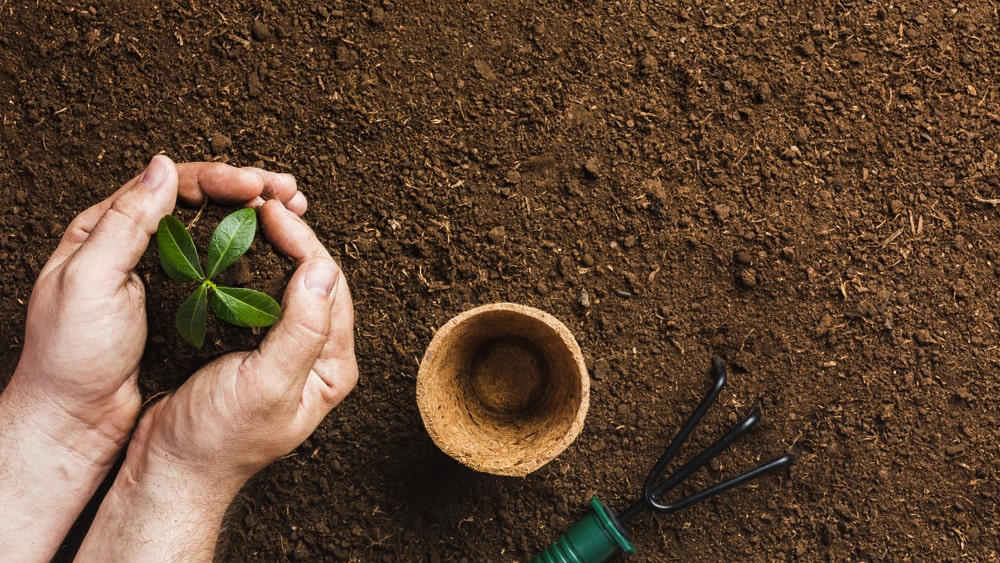Home>Types of Gardening>Ornamental Gardening>What Is The Difference Between Coniferous And Deciduous Trees
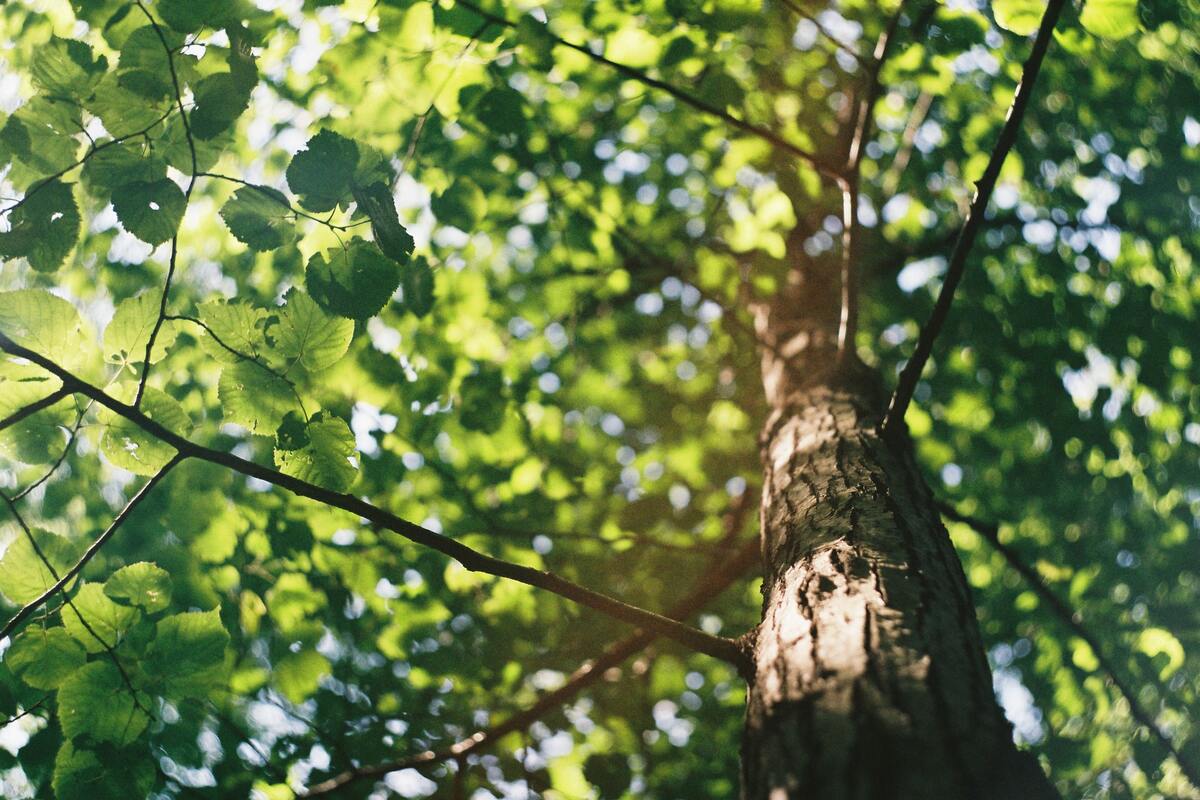

Ornamental Gardening
What Is The Difference Between Coniferous And Deciduous Trees
Modified: January 22, 2024
Discover the key distinctions between coniferous and deciduous trees in ornamental gardening. Find out which trees are best for your garden design.
(Many of the links in this article redirect to a specific reviewed product. Your purchase of these products through affiliate links helps to generate commission for Chicagolandgardening.com, at no extra cost. Learn more)
Table of Contents
- Introduction
- Definition of Coniferous Trees
- Definition of Deciduous Trees
- Characteristics of Coniferous Trees
- Characteristics of Deciduous Trees
- Differences in Leaf Structure
- Differences in Reproduction and Pollination
- Differences in Adaptation to Seasons
- Differences in Lifespan
- Differences in Ecological Role
- Conclusion
Introduction
Welcome to the fascinating world of ornamental gardening! Whether you are an avid gardener or just starting out, understanding the difference between coniferous and deciduous trees is essential for creating a stunning and harmonious garden. These two types of trees are distinct in their characteristics, which greatly influence their appearance, growth patterns, and ecological role. By knowing the differences between them, you can make informed choices when designing your garden and selecting the right trees that suit your preferences and climate.
Coniferous and deciduous trees are both popular choices in ornamental gardening, but they have significant variations in their physical traits and behavior throughout the year. Coniferous trees, also known as evergreens, are characterized by their needle-like or scale-like leaves, which they retain year-round. In contrast, deciduous trees shed their leaves during the autumn season, resulting in vibrant foliage changes.
This article will delve into the characteristics, leaf structure, reproduction, adaptation to seasons, lifespan, and ecological roles of coniferous and deciduous trees. By exploring these aspects, you will gain a deeper understanding of their differences and how they can contribute to the beauty and functionality of your garden.
Definition of Coniferous Trees
Coniferous trees are a group of trees that belong to the Gymnosperm phylum. Their unique feature lies in their reproductive structures, which are commonly known as cones. Conifers are typically categorized as evergreen trees, meaning they retain their foliage throughout the year. Unlike deciduous trees, conifers do not shed their leaves in the fall.
One of the notable characteristics of coniferous trees is their needle-like or scale-like leaves. These leaves are adapted to conserve water, making them well-suited for dry and cold climates. The needle-like leaves, such as those seen on pine and spruce trees, have a small surface area compared to flat leaves, reducing water loss through evaporation. On the other hand, scale-like leaves, like those found on cedars and junipers, have a waxy coating that aids in moisture retention.
Conifers are also known for their conical or pyramidal shape, which allows them to shed snow easily during winter months. This shape helps prevent damage caused by heavy snow accumulation and allows the tree to continue growing in adverse weather conditions.
In terms of size, conifers vary significantly, ranging from dwarf varieties suitable for small gardens to towering giants like the coastal redwood and the sequoia. Some common examples of coniferous trees include spruce, fir, pine, cedar, cypress, and juniper.
These trees are valued for their year-round greenery, making them ideal for creating privacy screens, windbreaks, and ornamental focal points in gardens. Additionally, their conical shape and unique foliage provide visual interest and architectural appeal to landscape designs.
Definition of Deciduous Trees
Deciduous trees are a group of trees that shed their leaves during a specific season, typically in autumn or fall. Unlike coniferous trees, deciduous trees go through a cycle of leaf growth, vibrant foliage display, and leaf shedding, which adds dynamic beauty to landscapes throughout the year.
One of the distinguishing characteristics of deciduous trees is their broad and flat leaves. These leaves have a larger surface area, which aids in capturing sunlight for photosynthesis. The broad leaves also allow for effective transpiration, the process by which plants release excess water vapor. As the seasons change and temperatures drop, the trees begin to withdraw nutrients from their leaves, leading to their eventual shedding.
Deciduous trees display a wide range of leaf colors during the autumn season, including vibrant reds, oranges, yellows, and browns. This foliage spectacle creates a stunning visual display, making deciduous trees popular choices for adding seasonal interest to gardens and parks.
It’s important to note that not all deciduous trees shed leaves at the same time or in the same manner. Some species lose their leaves gradually throughout the autumn, while others drop them all at once. The timing and duration of leaf shedding depend on factors such as daylight duration, temperature, and the tree species itself.
Common examples of deciduous trees include maple, oak, birch, ash, poplar, and beech trees. These trees come in various sizes and shapes, offering an array of choices for different garden styles and aesthetic preferences.
Deciduous trees have numerous advantages in landscaping. Beyond their seasonal beauty, they provide shade during the summer and allow sunlight to penetrate through in the winter, creating a balanced environment for surrounding plants. They also contribute to biodiversity by providing habitats for birds, insects, and other wildlife. Additionally, their fallen leaves enrich the soil, acting as a natural fertilizer.
Characteristics of Coniferous Trees
Coniferous trees possess distinct characteristics that set them apart from other tree types. Understanding these characteristics will help you appreciate their beauty and make informed decisions when incorporating them into your garden design.
1. Evergreen Foliage: One of the defining features of coniferous trees is their evergreen foliage, meaning they maintain their leaves throughout the year. This provides year-round greenery and adds structure and interest to the landscape, even during the winter when most deciduous trees have shed their leaves.
2. Needle-like or Scale-like Leaves: Coniferous trees have leaves that are typically needle-like or scale-like. Needle-like leaves, as seen in pine and spruce trees, are adapted to withstand cold temperatures and reduce water loss through evaporation. Scale-like leaves, found in trees like cedar and juniper, have a waxy coating that aids in moisture retention.
3. Conical or Pyramidal Shape: Many conifers have a conical or pyramidal shape, which gives them an elegant and distinctive appearance. This shape allows conifers to shed snow more easily, preventing damage caused by heavy snow accumulation and ensuring their survival in harsh winter conditions.
4. Diverse Sizes: Coniferous trees come in a wide range of sizes, from dwarf varieties that are suitable for small gardens or containers to majestic giants like the coastal redwood. This variety provides great flexibility in selecting trees that fit your space and desired aesthetic.
5. Slow Growth Rate: Conifers generally have a slower growth rate compared to deciduous trees. This characteristic makes them low-maintenance and allows you to enjoy their beauty without frequent pruning or trimming.
6. Hardiness: Conifers are known for their adaptability to various climates and soils. They can thrive in both hot and cold climates and are often more resistant to pests and diseases than other tree types.
7. Longevity: Coniferous trees tend to have a longer lifespan compared to deciduous trees. Some conifers, like the bristlecone pine, can live for thousands of years, making them living testaments to the passage of time.
Overall, coniferous trees bring a sense of permanence, structure, and year-round greenery to gardens. Their unique characteristics make them excellent choices for creating privacy screens, windbreaks, or focal points in landscape designs.
Characteristics of Deciduous Trees
Deciduous trees possess distinct characteristics that make them stand out in the botanical world. Understanding these traits will help you appreciate their beauty and make informed decisions when incorporating them into your garden design.
1. Seasonal Leaf Cycle: The most prominent characteristic of deciduous trees is their seasonal leaf cycle. They go through a process of leaf growth, vibrant foliage display, and leaf shedding, creating a dynamic and visually captivating transformation throughout the year.
2. Broad and Flat Leaves: Deciduous trees typically have broad and flat leaves that allow for effective sunlight capture and photosynthesis. These larger leaves also contribute to the beautiful display of colors during the autumn season when pigments within the leaves change, showcasing vibrant hues of red, orange, yellow, and brown.
3. Varied Leaf Shedding: While all deciduous trees shed their leaves, the timing and duration of leaf shedding can vary. Some trees gradually lose their leaves over an extended period, while others drop their foliage relatively quickly. The timing of leaf shedding is influenced by factors such as daylight duration, temperature changes, and tree species.
4. Habitual Growth Form: Deciduous trees display a diverse range of growth forms, including upright, spreading, weeping, and columnar. This variety allows gardeners to choose trees that match their desired aesthetic and suit the available space in the landscape.
5. Shade Providers: Deciduous trees are excellent providers of shade during the warmer months. The broad canopy of leaves helps to lower temperatures, create cooler microclimates, and provide relief from the sun’s intensity.
6. Wildlife Habitats: Deciduous trees play a crucial role in providing habitats for birds, insects, and other wildlife. The dense structures of their branches and leaves offer shelter, nesting sites, and food sources, contributing to the diversity and ecological balance of the surrounding environment.
7. Soil Enrichment: When deciduous trees shed their leaves, the fallen leaves decompose and enrich the soil with organic matter. This natural process helps improve soil fertility and provides a sustainable source of nutrients for other plants in the garden.
Deciduous trees bring ever-changing beauty to gardens, with stunning displays of colorful foliage during the autumn season and elegant silhouettes during the winter months. Their varied growth forms and ecological benefits make them fantastic additions to landscape designs, offering shade, habitat, and enriching the soil.
Differences in Leaf Structure
The leaf structure is one of the key distinguishing factors between coniferous and deciduous trees. Understanding these differences will help you identify and appreciate the uniqueness of each tree type.
Coniferous Trees:
Coniferous trees have needle-like or scale-like leaves. These leaves are typically narrow and elongated, resembling needles or scales rather than the broad, flat leaves seen on deciduous trees.
The needle-like leaves of conifers, such as pine and spruce trees, are adapted to withstand harsh climates. Their small surface area reduces water loss through evaporation, making them well-suited to dry and cold environments. Needle-like leaves also have a thick waxy cuticle that helps to prevent excessive moisture loss.
On the other hand, some coniferous trees, like cedar and juniper, have scale-like leaves. These leaves are small and closely packed together, resembling overlapping scales on a fish. The scale-like leaves have a waxy coating that aids in moisture retention, making them more resistant to dry conditions.
Deciduous Trees:
Deciduous trees have broad and flat leaves. These leaves are typically larger in size and have a wider surface area compared to the needle-like or scale-like leaves of conifers.
The broad leaves of deciduous trees are adapted for capturing sunlight more efficiently. The large surface area allows for maximum photosynthesis, enabling the tree to produce ample energy for growth and survival.
During the autumn season, the broad leaves of deciduous trees undergo a gradual change in color as the chlorophyll pigments break down. This process reveals the vibrant hues of reds, oranges, yellows, and browns, creating a spectacular foliage display before the leaves eventually fall off.
Overall, the leaf structures of coniferous and deciduous trees reflect their adaptation to different climates and growth strategies. While conifers have needle-like or scale-like leaves, which conserve water and withstand extreme conditions, deciduous trees have broad leaves that maximize photosynthesis and contribute to the seasonal splendor of autumn.
Differences in Reproduction and Pollination
Coniferous and deciduous trees have distinct methods of reproduction and pollination. Understanding these differences will provide insight into their reproductive strategies and how they contribute to the diversity and propagation of each tree type.
Coniferous Trees:
Coniferous trees have reproductive structures called cones, which play a crucial role in their reproduction. These cones can be either male or female, with each serving a specific purpose in the reproductive process.
The male cones, often smaller and less conspicuous, produce pollen containing the male reproductive cells or sperm. These pollen grains are released into the wind and carried to the female cones, where pollination occurs.
The female cones, typically larger and more visible, contain ovules or female reproductive cells. When the wind-carried pollen reaches the female cones, fertilization takes place, resulting in the development of seeds within the cones.
Coniferous trees are known for their wind pollination method, which allows them to reproduce over long distances. The reliance on wind for pollination has led to the development of lightweight, pollen-producing structures that can be easily carried by air currents, ensuring widespread dispersal and genetic diversity.
Deciduous Trees:
Deciduous trees have a more varied range of reproductive methods compared to conifers. Many deciduous trees rely on insect pollination, attracting pollinators such as bees, butterflies, and other insects with their showy and fragrant flowers.
The flowers of deciduous trees contain both male and female reproductive parts. The male parts, called stamens, produce pollen, while the female part, the pistil, contains the ovary that houses the ovules.
Insects, attracted by the flowers’ nectar and fragrance, transfer pollen from the stamens to the pistil as they move between flowers. This pollination process fertilizes the ovules and leads to the production of seeds within the fruit or seed pod of the tree.
Some deciduous trees also use self-pollination as a means of reproduction, where the pollen from the stamens directly fertilizes the ovules of the same flower or another flower on the same tree.
The reliance on insect pollination in deciduous trees allows for more controlled and targeted reproduction, as insects can transfer pollen between flowers within the same tree or between different trees of the same species.
Overall, the reproductive methods and pollination strategies of coniferous and deciduous trees reflect their evolutionary adaptations to ensure successful reproduction and genetic diversity in their respective environments.
Differences in Adaptation to Seasons
Coniferous and deciduous trees exhibit striking differences in how they adapt to the changing seasons. Their unique adaptations allow them to thrive in varying environmental conditions and contribute to the biodiversity of ecosystems.
Coniferous Trees:
Coniferous trees, also known as evergreens, have evolved specific adaptations that enable them to endure and thrive in harsh winter conditions.
One key adaptation is their ability to retain their foliage year-round. Conifers have needle-like or scale-like leaves that are well-suited for conserving water and resisting moisture loss during dry winter months. The small surface area of needle-like leaves and the waxy coating on scale-like leaves help to prevent excessive evaporation.
The conical or pyramidal shape of many conifers also aids in their adaptation to winter. This shape allows snow to slide off easily, preventing damage caused by the weight of accumulated snow and reducing the risk of broken branches.
Deciduous Trees:
Deciduous trees have evolved different strategies for adapting to seasonal changes, primarily focused on surviving cold winters and maximizing resource availability during other seasons.
One prominent adaptation is the shedding of leaves during the autumn season. As temperatures drop and daylight hours decrease, deciduous trees withdraw nutrients from their leaves, causing them to change color and eventually fall off. By shedding their leaves, deciduous trees minimize water loss and prevent damage from freezing temperatures.
Deciduous trees also store energy and resources in their roots during the winter months, providing nourishment for new leaf growth in the spring. This allows them to take full advantage of the abundant sunlight and favorable growing conditions in other seasons.
Ecological Significance:
The adaptations of coniferous and deciduous trees to different seasons have significant ecological implications.
Conifers, with their evergreen foliage, provide consistent greenery throughout the year, which is especially valuable in cold or barren landscapes. They offer shelter, nesting sites, and food sources for various wildlife, contributing to biodiversity even in the harshest environments.
Deciduous trees, on the other hand, play a crucial role in maintaining ecological balance through annual leaf drop and regeneration. The fallen leaves provide organic matter that enriches the soil, enhancing nutrient cycling and supporting the growth of other plants and microorganisms.
Overall, the adaptations of coniferous and deciduous trees to seasons showcase nature’s remarkable ability to thrive in diverse environments and contribute to the overall health and resilience of ecosystems.
Differences in Lifespan
Coniferous and deciduous trees exhibit notable differences in their lifespan, with some species of both types known for their exceptional longevity.
Coniferous Trees:
Coniferous trees are generally known for their longer lifespan compared to deciduous trees. They have the ability to survive for several decades or even centuries.
Some conifers, such as the bristlecone pine (Pinus longaeva) and the giant sequoia (Sequoiadendron giganteum), are among the oldest living organisms on Earth. These long-lived species can reach ages of thousands of years, with some individual trees known to have survived for over 5,000 years.
Not all conifers, however, have such extraordinary longevity. Many coniferous species have a relatively average lifespan within the range of 100 to 500 years. Factors such as climate, growing conditions, and species-specific traits can influence the lifespan of individual conifers.
Deciduous Trees:
Deciduous trees generally have a shorter lifespan compared to conifers, with some exceptions. The average lifespan of most deciduous trees ranges from about 20 to 100 years.
However, there are some deciduous tree species that can live for several centuries. For example, oak trees (Quercus spp.) can live for several hundred years, with some individuals reaching ages of over 1,000 years.
The lifespan of deciduous trees is influenced by various factors, including growing conditions, environmental stressors, and susceptibility to diseases and pests.
Implications and Significance:
The lifespan differences between coniferous and deciduous trees have implications for ecosystem dynamics and landscape planning.
Conifers, with their longer lifespan, play key roles in providing long-term structure and stability to ecosystems. They contribute to forest canopy formation, provide nesting sites for birds, and offer shelter for various wildlife species.
Deciduous trees, despite having a shorter lifespan on average, serve important ecological functions. They contribute to biodiversity, provide habitats for wildlife, and play a crucial role in nutrient cycling through leaf litter decomposition.
Understanding the lifespan differences between coniferous and deciduous trees is essential in selecting appropriate species for reforestation projects, urban greening initiatives, and long-term landscape planning.
It’s important to note that lifespan can vary widely within each tree type, and specific species and growing conditions can influence individual tree lifespans.
Differences in Ecological Role
Coniferous and deciduous trees play distinct ecological roles within their respective ecosystems, contributing to biodiversity, nutrient cycling, and overall ecosystem health in different ways.
Coniferous Trees:
Coniferous trees, with their evergreen foliage and unique characteristics, have important ecological roles in various habitats.
One of the significant roles of conifers is their ability to provide year-round shelter and nesting sites for birds and other wildlife. Their dense branches and evergreen foliage offer protection from predators and harsh weather conditions.
In addition to providing habitat, conifers contribute to the overall structure and stability of forest ecosystems. Their tall stature and extensive root systems help reduce soil erosion, stabilize slopes, and prevent water runoff, which is crucial for maintaining healthy watersheds.
Coniferous trees also act as carbon sinks, absorbing significant amounts of carbon dioxide from the atmosphere through photosynthesis. This helps mitigate the impacts of climate change by reducing greenhouse gas levels and curbing global warming.
Furthermore, the fallen needles and cones of conifers decompose slowly, creating a nutrient-rich layer on the forest floor. This litter provides habitat for microorganisms and invertebrates, supports the growth of fungi, and contributes to nutrient cycling in the ecosystem.
Deciduous Trees:
Deciduous trees also have vital ecological roles in various habitats, offering unique benefits to the environment.
One of the significant ecological contributions of deciduous trees is their role in enhancing biodiversity. The broad range of deciduous tree species supports a diverse array of organisms, including insects, birds, mammals, and fungi. These trees provide food, shelter, and breeding sites for numerous wildlife species, contributing to the overall richness and balance of ecosystems.
In addition to supporting biodiversity, deciduous trees play a critical role in nutrient cycling. Their annual leaf drop and decomposition release essential nutrients back into the soil, enriching it and supporting the growth of other plants.
Deciduous trees also contribute to the regulation of water cycles. Their extensive root systems help absorb and retain water, reducing the risk of soil erosion and controlling the flow of water in rivers and streams. Their shade-providing capabilities also help to lower soil temperatures and mitigate the risk of water evaporation in hot climates.
Lastly, deciduous trees have aesthetic and recreational value, providing beauty and shade in urban areas, parks, and gardens, and offering spaces for relaxation and outdoor activities.
Combined Ecological Impact:
The combined presence of coniferous and deciduous trees in an ecosystem creates a complex and diverse environment. Their distinct traits and ecological roles complement each other, resulting in a synergistic impact on biodiversity, nutrient cycling, and ecosystem services.
Understanding and preserving the ecological roles of both coniferous and deciduous trees is crucial for maintaining healthy and resilient ecosystems and promoting sustainable land management practices.
Conclusion
Exploring the differences between coniferous and deciduous trees reveals the remarkable diversity and adaptability of the plant kingdom. Each tree type has its own unique characteristics, leaf structures, reproductive methods, adaptation to seasons, lifespan, and ecological roles.
Coniferous trees, with their needle-like or scale-like evergreen foliage, exhibit adaptations that allow them to thrive in various climates and harsh winter conditions. They provide year-round greenery, stability in ecosystems, and serve as vital habitats for wildlife. Conifers also play a significant role in mitigating climate change through carbon sequestration.
Deciduous trees, with their broad and flat leaves that change colors and shed during the autumn season, bring seasonal interest and vibrant beauty to landscapes. They support biodiversity, nutrient cycling, and water regulation in ecosystems. Deciduous trees provide valuable habitats for wildlife, contribute to soil fertility through leaf litter decomposition, and play essential roles in water retention and temperature regulation.
Understanding the characteristics and ecological roles of both coniferous and deciduous trees is crucial for creating well-balanced and sustainable landscapes. By incorporating a diversity of tree types, gardeners and landscapers can enhance the beauty, functionality, and ecological resilience of their outdoor spaces.
Whether you prefer the year-round greenery and stability of coniferous trees or the seasonal drama and ecological contributions of deciduous trees, both have their place in ornamental gardening. Carefully selecting and incorporating a combination of conifers and deciduous trees will ensure a visually appealing and ecologically rich landscape.
So, as you embark on your ornamental gardening journey, consider the unique attributes and ecological significance of coniferous and deciduous trees. Appreciate their diverse leaf structures, reproduction methods, adaptation to seasons, lifespan, and ecological roles, and leverage this knowledge to create a harmonious and captivating garden that stands the test of time.
